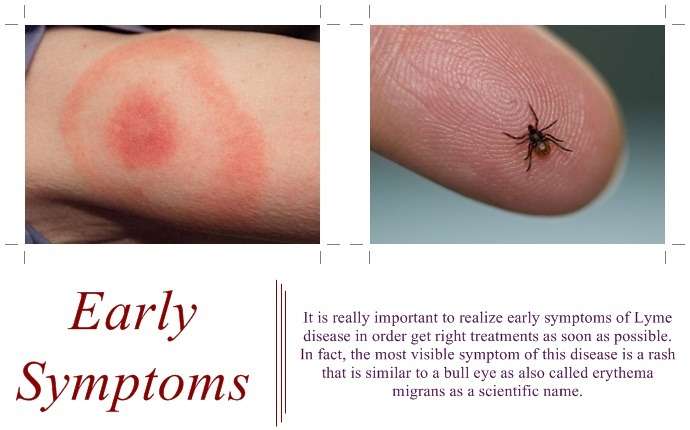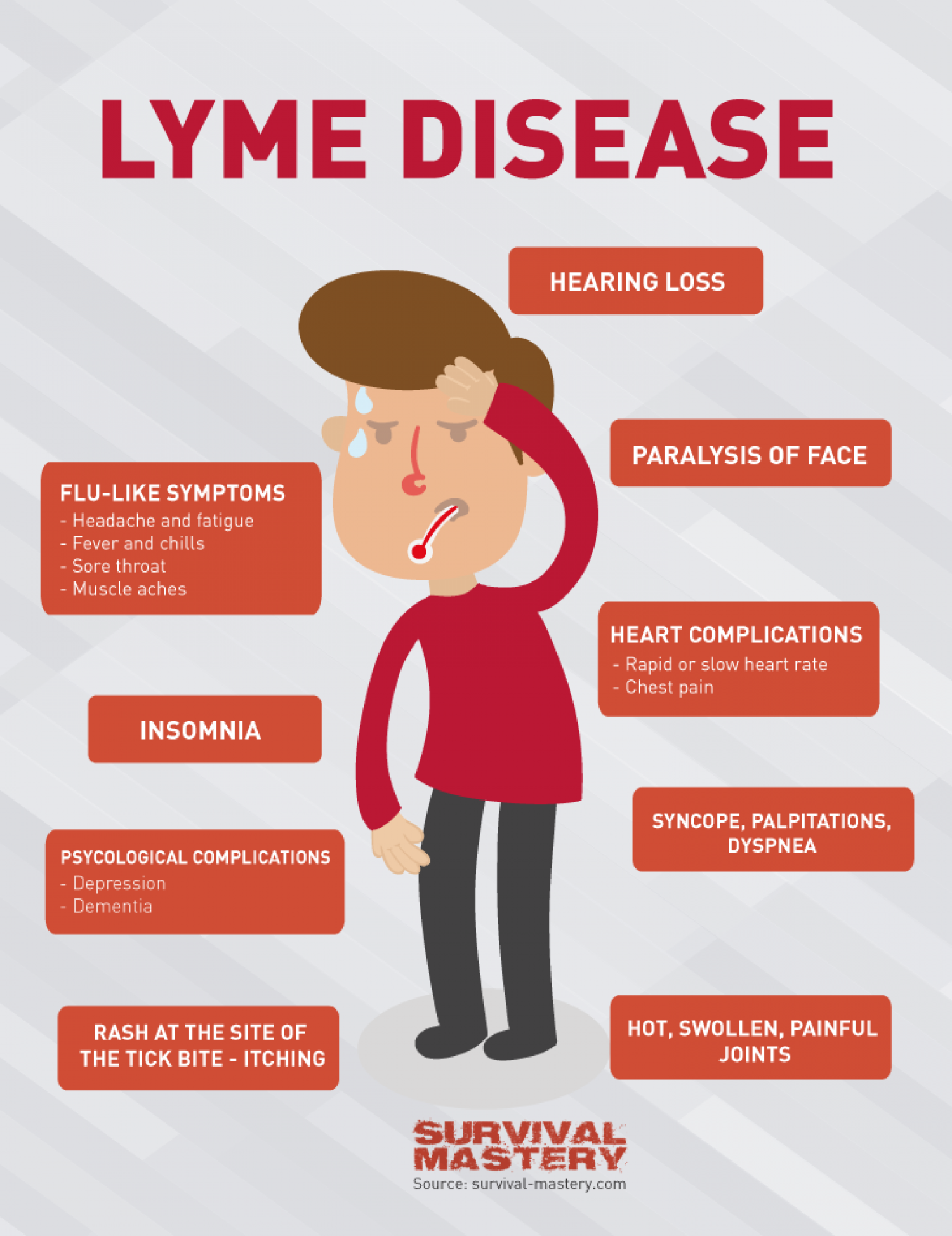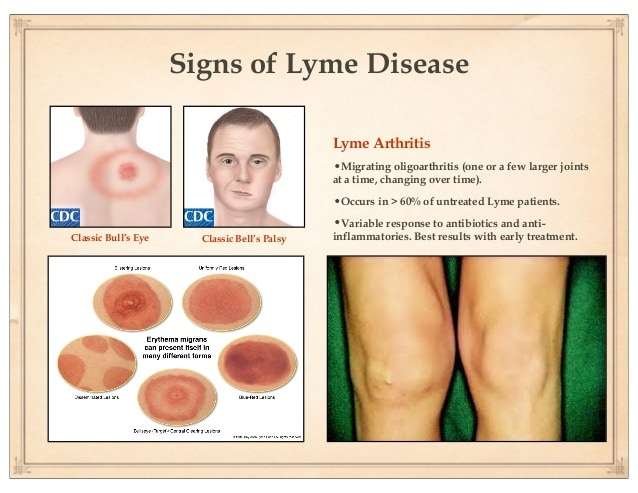What Do You Do If There’s A Tick Under Your Skin
Use a pair of fine-tipped tweezers to remove it as soon as possible. Pull upward with steady pressure. If parts of the tick are still in your skin, try to get those with the tweezers, too. After everything is out, clean the bite area with rubbing alcohol or soap and water.
You probably wonât get infected if you remove the tick within 36 to 48 hours.
How do you throw away a tick?
Put it in soapy water or alcohol, stick it to a piece of tape, or flush it down the toilet.
What Can Be Done To Prevent Lyme Disease
The best prevention of Lyme disease is through awareness. Generally, ticks cannot jump or fly onto a person. They wait in vegetation and cling to animals and humans when they brush by. When in a potentially tick-infested habitat take special care to prevent tick bites, such as wearing light-colored clothing and tucking pants into socks and shirt into pants. Check after every 2 to 3 hours of outdoor activity for ticks on clothing or skin. Brush off any ticks on clothing or skin before skin attachment occurs. A thorough check of body surfaces for attached ticks should be done at the end of the day. If removal of attached ticks occurs within 36 hours, the risk of tick-borne infection is minimal. For proper tick removal, please watch the video at Tick removal. A vaccine for Lyme disease is not currently available.
Insect repellents can be effective at reducing bites from ticks that can spread disease. If you decide to use a repellent, use only what and how much you need for your situation. More information on repellents can be found at Environmental Protection Agency â insect-repellents.
In addition:
Domestic animals can carry ticks into areas where you live so it is important to check pets for ticks before they enter the home.
Stage : Early Localized Disease
Symptoms of Lyme disease usually start 1 to 2 weeks after the tick bite. One of the earliest signs of the disease is a bulls-eye rash.
The rash occurs at the site of the tick bite, usually, but not always, as a central red spot surrounded by a clear spot with an area of redness at the edge. It may be warm to the touch, but it isnt painful and doesnt itch. This rash will gradually fade in most people.
The formal name for this rash is erythema migrans. Erythema migrans is said to be characteristic of Lyme disease. However, many people dont have this symptom.
Some people have a rash thats solid red, while people with dark complexions may have a rash that resembles a bruise.
The rash can occur with or without systemic viral or flu-like symptoms.
Other symptoms commonly seen in this stage of Lyme disease include:
Don’t Miss: Lyme Vaccine For Dogs How Often
How Is Lyme Disease Spread
Not all deer ticks are infected with the bacteria that cause Lyme disease. Ticks can become infected if they feed on animals such as mice and other mammals that are infected. The disease can be spread when an infected tick bites a person and stays attached for a period of time. In general, the tick must be attached for 36 to 48 hours or more. Lyme disease does not spread from one person to another. Transfer of the bacteria from an infected pregnant woman to her fetus is extremely rare.
What Is Borrelia Mayonii

Borrelia mayonii are a type of bacteria recently found in North America that can cause Lyme disease. These bacteria are different from the three types of bacteria that cause most cases of Lyme disease worldwide.
- Borrelia burgdorferi
- B. afzelii
- B. garinii
B. mayonii is the only species besides B. burgdorferi shown to cause Lyme disease in North America.
Recommended Reading: What Are The Lasting Effects Of Lyme Disease
What Are The Early Symptoms Of Lyme Disease
Considering how common Lyme disease is, it is surprising that more people are not aware of its early symptoms.
Lyme disease is a common vector-borne disease it is transmitted through fleas, ticks and mosquitoes. According to the Centers for Disease Control and Prevention, an estimated 20,000 to 30,000 cases of Lyme disease are reported each year.
Although it is not as rampant as the common cold or the flu, Lyme disease is still problematic. Symptoms of Lyme disease include loss of energy and tiredness. However, if treatment is withheld for longer, the symptoms often lead to further serious health issues that take time to resolve.
Here are some symptoms you should be aware of.
What Is The Prognosis Of Lyme Disease
Prognosis is excellent and most patients recover completely, especially if treated early with appropriate antibiotics. Sometimes a recurrent infection can occur with certain strains, but Lyme disease can be managed well with medication. Co-infection by other organisms transmitted by the same tick bite can occur.
Don’t Miss: How Do They Treat Lyme Disease
How To Remove Ticks
Tick bites aren’t always painful. You may not notice a tick unless you see it on your skin. Check your skin and your children’s or pets’ skin after being outdoors.
To remove a tick:
The risk of getting ill is low. You don’t need to do anything else unless you become unwell.
When Should You See A Doctor If You Think You Have Lyme
The rash is a pretty good indication that you may have been bitten. Take a photo of the rash and see your doctor. At this stage, treatment with antibiotics will probably work.
If you don’t have the rash but have symptoms like fatigue, fever, and headache but no respiratory symptoms like a cough, you may want to talk to your doctor.
Also Check: Lyme Disease Heart Block Treatment
Can Lyme Disease Be Prevented
To prevent Lyme disease, you should lower your risk of getting a tick bite:
- Avoid areas where ticks live, such as grassy, brushy, or wooded areas. If you are hiking, walk in the center of the trail to avoid brush and grass.
- Use an insect repellent with DEET
- Treat your clothing and gear with a repellant containing 0.5% permethrin
- Wear light-colored protective clothing, so you can easily see any ticks that get on you
- Wear a long-sleeve shirt and long pants. Also tuck your shirt into your pants and your pant legs into your socks.
- Check yourself, your children, and your pets daily for ticks. Carefully remove any ticks you find.
- Take a shower and wash and dry your clothes at high temperatures after being outdoors
Centers for Disease Control and Prevention
Lyme Disease And The Cdc
In order for the Centers for Disease Control to recognize a Lyme case for surveillance purposes, there must be objective findings, such as positive blood tests, Bells palsy or joint swelling . The chart below reflects the CDC-reviewed surveillance case manifestations from 2001 to 2010.
This situation contributes to what many experts view as severe undercounting of Lyme disease by the CDC.
You May Like: How Do You Know If You Have Lyme Disease
What To Do If You Have A Blacklegged Tick Bite
Remove the tick by pulling it directly out with fine-tipped tweezers. Lift upward with slow and even pressure. Dont twist when removing it. Dont crush it or put soap or other substances on it. Dont apply heat to it.
Place the tick in a resealable container. See if you can identify what kind of a tick it is.
Immediately after removing the tick, wash your skin well with soap and water or with rubbing alcohol.
Not all ticks carry Lyme. The Lyme bacteria is transmitted only by blacklegged ticks in their nymph or adult stage.
Save the tick to show your doctor. The doctor will want to determine if its a blacklegged tick and if theres evidence of feeding. Ticks enlarge as they feed. Your risk of getting Lyme from an infected tick increases with the length of time that the tick fed on your blood.
Summary:
Pull the tick out with tweezers and save it in a resealable container for identification.
The Experience Of Lyme Disease

In our book, Conquering Lyme Disease: Science Bridges the Great Divide, we review several of the key features of Lyme disease that can make the experience of this illness so challenging, including:
- The politically charged climate
- The protean nature of manifestations of the illness
- The waxing and waning course of symptoms
- The psychological ramifications of having an “invisible” chronic illness and the experience of invalidation
- The challenge of having a disease that affects the brain and sensory system
- The impact of uncertainty surrounding diagnosis, treatment, and prognosis
Don’t Miss: Red Light Therapy For Lyme Disease
What Is Early Localized Lyme Disease
Lyme disease, also known as Lyme borreliosis, is a condition caused by an infection with the bacteria Borrelia burgdorferi. This bacteria is spread through tick bites.
People who work outside or spend time in woodland areas are most likely to be affected. Typical symptoms include a ‘bull’s eye’ rash, fever, headache, fatigue, and joint pain. This condition can be treated with antibiotics, and most people recover well.
What Are The Signs And Symptoms Of Lyme Disease By Stages
There are three stages of Lyme disease, which are outlined below.
Stage 1 Early Localized Disease
- Occurs one to 30 days after a tick bite
- characteristic skin rash of Lyme disease
- migrating red rash with bullseye appearance occurring at or near the site of the tick bite
- asymptomatic or itches orburns
- develops around seven days after the tick bite
- rash expands over a matter of days
- an untreated rash may persist for two to three weeks
Stage 3 Late Disease
Stage 3 Lyme disease occurs months to years after the initial infection or a period of latency. Most patients presenting with the late disease do not have erythema migrans because the rash urges the patient to seek treatment earlier.
Symptoms of Stage 3 Lyme Disease may include the following:
- Skin manifestation:
- Acrodermatitis chronica atrophicans: found almost exclusively in patients of European descent. It commonly affects older women with bluish-red discoloration on the back of the hands, feet, knees, and elbows.
Read Also: Lyme Disease Blood Test Cost
Recommended Reading: Do You Ever Get Over Lyme Disease
Pearls And Other Issues
Based on the geographic distribution of the shared vector Ixodes scapularis, co-infections with Lyme disease and human granulocytic anaplasmosis and/or babesiosis can occur. Co-infected patients may be more severely ill at presentation, have a persistent fever longer than 48 hours after initiating antibiotic therapy for Lyme disease, or present with anemia, leukopenia, and/or thrombocytopenia. When co-infection is suspected or confirmed, treatment with an appropriate antimicrobial regimen for each infection is necessary for resolution of illness.
Treatment For Erythema Migrans
People treated with appropriate antibiotics in the early stages of Lyme disease usually recover rapidly and completely. Early diagnosis and proper antibiotic treatment of Lyme disease can help prevent late Lyme disease.
Treatment regimens listed in the following table are for the erythema migrans rash, the most common manifestation of early Lyme disease. These regimens may need to be adjusted depending on a persons age, medical history, underlying health conditions, pregnancy status, or allergies. Consult an infectious disease specialist regarding individual patient treatment decisions.
| Age Category | |
|---|---|
| 100 mg, twice per day orally | N/A |
| 500 mg, three times per day orally | N/A |
| 500 mg, twice per day orally | N/A |
| 4.4 mg/kg per day orally, divided into 2 doses | 100 mg per dose |
| 50 mg/kg per day orally, divided into 3 doses | 500 mg per dose |
| 30 mg/kg per day orally, divided into 2 doses | 500 mg per dose |
*When different durations of antibiotics are shown to be effective for the treatment of Lyme disease, the shorter duration is preferred to minimize unnecessary antibiotics that might result in adverse effects, including infectious diarrhea and antimicrobial resistance.
NOTE: For people intolerant of amoxicillin, doxycycline, and cefuroxime, the macrolide azithromycin may be used, although it is less effective. People treated with azithromycin should be closely monitored to ensure that symptoms resolve.
Recommended Reading: What Does The Rash Of Lyme Disease Look Like
What Might A Doctor Misdiagnose Lyme Disease As
Ticks can carry a variety of different organisms and diseases with them.
The lone star tick can carry a disease known as southern tick-associated rash illness. The rash it causes to a Lyme disease rash. In addition, it can cause similar symptoms to Lyme disease, including fever, fatigue, joint and muscle aches, and headache.
Enhancing Healthcare Team Outcomes
The key to Lyme disease is prevention and this requires an interprofessional team approach. All healthcare workers including the nurse practitioner, pharmacist, and primary care provider should provide patient education on measures to prevent tick bites while hiking or working outdoors. In areas where ticks are common, cleaning up of the environment by removing the underbrush and spraying an insecticide may reduce the tick burden in the area. The outdoors person should be told to wear appropriate garments and be familiar with the skin features of the tick bite. The nurse should educate the patient on how to remove the tick from the skin and when to seek medical assistance. The pharmacist should educate the patient on medication compliance for those who have been confirmed to have acquired Lyme disease.
Nurses should educate parents how to inspect their children for ticks at the end of an outdoor event, in an endemic area. While there are many repellants on the market, it is best to avoid them as the risk of harm is greater than any benefit. If one is going to use a repellant, DEET is the one product that is safe, however, it is not 100% effective. finally, the pharmacist should educate the patient about the harms of taking prophylactic doxycycline a better strategy is to remove the tick as soon as it is visualized.
Outcomes
You May Like: Condos For Rent In East Lyme Ct
Lyme Disease Symptoms Also Occur In Other Diseases
Many Lyme symptoms, such as fatigue, cognitive impairment, joint pain, poor sleep, mood problems, muscle pain, and neurological presentations also occur in other diseases. Hence, the symptoms of Lyme disease significantly overlap those of chronic fatigue, fibromyalgia, rheumatoid arthritis, multiple sclerosis, Parkinsons disease, ALS, depression and Alzheimers disease. Many Lyme patients report being misdiagnosed with a different condition before being properly diagnosed with Lyme disease.
Early Symptoms Of Lyme Disease

Did you know that Lyme disease is the most commonly reported vector-borne illness in the United States?
In fact, according to the Centers for Disease Control and Prevention , there are about 30,000 new cases of Lyme disease diagnosed each year.
And while it can be treated with antibiotics if caught early enough, if left untreated, Lyme disease can cause serious health problems.
So, what are the early symptoms of Lyme disease?
Here are signs to watch out for:
In this article, well cover:
Read Also: Natural Protocol For Lyme Disease
Unexplained Pain And Other Sensations
Some people with Lyme may have sharp rib and chest pains that send them to the emergency room, suspecting a heart problem 00090-7/abstract%20″ rel=”nofollow”> 27).
When no problem is found, after the usual testing, the ER diagnosis is noted as an unidentified musculoskeletal cause.
You can also have strange sensations like skin tingling or crawling, or numbness or itchiness 00090-7/abstract%20″ rel=”nofollow”> 27).
Other symptoms have to do with cranial nerves.
- Ear-ringing . Tinnitus can be a nuisance, especially at bedtime when it seems to get louder as youre trying to fall asleep. About 10 percent of people with Lyme experience this (
- Hearing loss. One study reported that 15 percent of Lyme patients experienced loss of hearing .
- Jaw pain or toothaches that are not related to actual tooth decay or infection.
Summary:
Early Symptoms Of Lyme Disease In Adults
It might take just 24 hours for a deer tick to pass Lyme disease onto us, but the signs and symptoms of Lyme disease can vary. Lyme disease symptoms also usually appear in different stages.
Its not entirely uncommon for the early stages of Lyme disease to be misdiagnosed. Thats because the early symptoms of Lyme disease can feel like the flu. This includes a fever, sore muscles, headache and feeling tired.
One of the most obvious signs of Lyme disease is a rash that looks like a bullseye or a bruise. Lyme disease rashes can also look like spider bites, ringworm, or cellulitis. Multiple rashes can also appear on different parts of the body.
This obvious early symptom of Lyme disease can start a few days or even a few weeks after being bitten. It then expands over a period of days or weeks, reaching several inches across sometimes as large as 12 inches.
It is typically not painful or itchy. If left untreated, the rash can last for weeks as well as blister or scab over. While it will eventually fade, there is a chance it could reappear.
Fortunately, or unfortunately, the trademark rash only occurs in 60% to 80% of all Lyme disease cases. If you do develop a rash that has a bullseye shape with a darker edge, then you definitely have Lyme disease. But again, this distinctive sign of early Lyme disease occurs in less than 10% of people who contract Lyme disease.
Don’t Miss: Lyme Booster Shot For Dogs